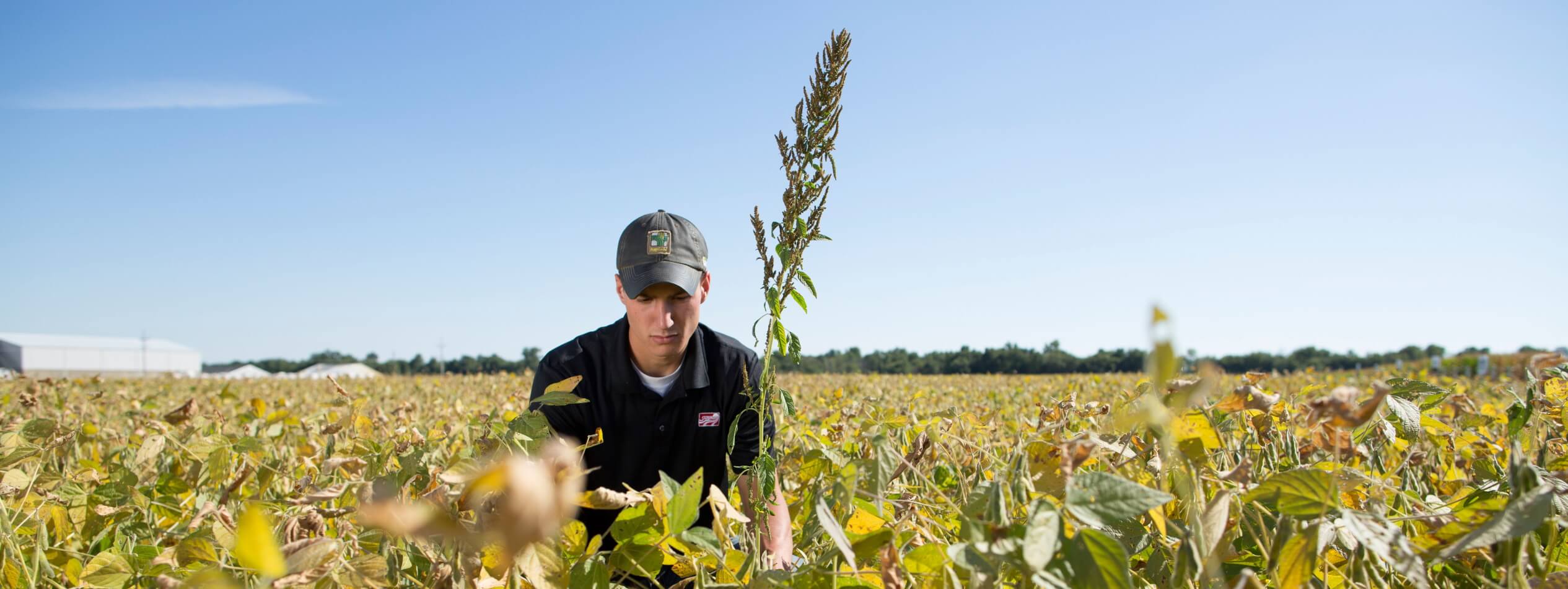There is nothing quite as pesky as weeds that just will not go away. The easiest way to deal with them is to simply eliminate them with herbicides. But this is a short-term fix. Those weeds will come right back. Herbicides only deal with the symptoms and not the cause.
The problem
Put simply, weeds are just undesired plants. They compete for and use resources (water and nutrients) that would be better served supplying desired plants. Thus, weeds need to be limited in favour of desirable plant growth.
Surely, we don’t want to be locked into such a cycle for perpetuity – completely dependent on herbicides.
As mentioned, the conventional way of getting rid of weeds is to use herbicides. The problem is that herbicides only kill what is currently there. They do not help with the weed seedbank that is often prolific in the soil. They do not help to address the reasons why weeds were there in the first place. And even more worrying is the evidence constantly emerging of more and more weeds developing resistance to herbicides. Herbicides also have a negative impact on soil health. This has been observed, but is largely still an unknown problem, with untold issues.
The response to all this by agro-chemical companies is just to come out with different herbicides that are supposed to address these challenges. This is a never-ending cycle. Surely, we don’t want to be locked into such a cycle for perpetuity – completely dependent on herbicides.
The cause
So why are the weeds there? As discussed, weeds are undesired plants. They are most often hardier plants than the desired ones. In other words, they do better under more adverse conditions.
Therefore, the weeds are telling you something. Under the current soil, management and climate conditions, they are more comfortable than your desired plants. The cause is therefore linked to soil health, management practices and climate.
Dealing with the cause
Dealing with weeds in the long-term therefore requires addressing these causes of soil, management and climate. Practices which alleviate pressure from weeds and are not associated with directly killing or removing the plants, are called cultural practices.
Cultural practices include improving soil health, optimising plant nutrition, implementing proper irrigation management, selecting the correct cultivars, ensuring correct germination and seedling establishment and implementing good grazing management.
Soil health
Improving soil health is by far the most important cultural practice of weed control. Optimal soil health leads to optimal desirable plant growth. When the desired plants are provided with the ideal habitat (i.e. healthy soil), they will outcompete weeds. Healthy soil has thriving soil biology, optimal and balanced fertility and good structure.
Soil biology in healthy soil protect plants from disease, cycle nutrients and help create an ideal rhizosphere around roots. Optimal fertility, for example pH, ensures desired plants are favoured. Poor structure, which leads to compaction, is ideal for weeds, and therefore should be avoided.
Management
Management is everything that has been discussed. But some important management practices to address are irrigation scheduling, grazing management and fertiliser management.
Over- and/or under-irrigation favours weeds over desired plants. Overirrigating which leads to waterlogging is especially a problem. Irrigating too much results in anaerobic conditions, which as under-irrigating results in water stressed conditions. Neither of these are favourable for the desired plants, therefore creating opportunities for weeds that can handle stressed conditions to flourish.
Good grazing management can control weeds very effectively. High-density grazing, where the animals learn not to be selective, usually results in weeds being eaten along with pastures. This knocks weeds back, and along with ideal soil health, allows desirable plants to grow back in their place.
Ill-timed, and excessive fertiliser application can also favour weed growth. This is especially true for nitrogen fertiliser. Fertiliser should be based on soil health testing and applied with the goal of improving soil health. Trying to force growth through nitrogen fertiliser application is not only bad for the soil but will also favour weed growth.
Climate
Climate is not something that can be controlled, so this is more about selecting what you plant according to the current climate. This needs to be monitored and adapted to. The climate is shifting and changing, and farmers need to learn to adapt accordingly. The correct species and cultivars, with the correct seeding practices for the climate will result in optimal establishment. This allows little room for weeds to come in and outcompete the desired plants.
Re-frame the problem
The problem is not actually a weed one. They are just indicators of other underlying issues. Address those issues, and your weeds will no longer be such a problem.
- A carbon footprint assessment for pasture-based dairy farming systems in South Africa - 2024-02-07
- What progress have farms participating with Trace & Save made over the past 10 years? - 2023-09-06
- Carbon footprint reduction over time: Lessons from pasture-based dairy farms in South Africa - 2023-09-04

